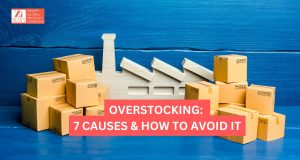Hospitality procurement is more than just buying products—it’s a strategic...
Read More
Table of Contents
On April 2, 2025, President Donald Trump announced a series of comprehensive tariff measures aimed at addressing longstanding trade imbalances and promoting domestic manufacturing. Termed “Liberation Day,” these policies introduce a universal 10% tariff on all imported goods, alongside higher, country-specific tariffs targeting nations with significant trade surpluses with the United States. These measures represent a significant shift in U.S. trade policy and have elicited varied reactions both domestically and internationally.
What Are the New Tariff Regulations?
The new tariff regulations are rules made by the U.S. government that add extra taxes on goods coming into the country from other countries. Starting April 2025, every product imported into the U.S. will be charged an extra 10% fee—this is called the universal tariff. On top of that, products from certain countries like China, the European Union, and Vietnam will be taxed even more, with some paying over 50% in total. The goal is to make imported goods more expensive so that American-made products can compete better. In short, the government wants people and businesses in the U.S. to buy more local products and rely less on goods from other countries.
The U.S. has long used tariffs to protect local industries, but President Trump’s April 2025 tariffs are the most extreme in modern times—raising the average rate to 22.5%, the highest since 1909.
Read more Navigating the new U.S. Tariffs: What Businesses Need to Know
Breakdown of the New Tariff Regulations
The newly announced tariff structure comprises two main components:
- Universal Tariff: A baseline 10% tariff imposed on all imported goods entering the United States. This tariff is set to take effect on April 5, 2025.
- Country-Specific Tariffs: In addition to the universal tariff, higher tariffs have been designated for specific countries based on the magnitude of their trade surpluses with the U.S. Notable examples include:
- China: Imports from China will be subjected to a cumulative tariff rate of 54%, reflecting a 44% country-specific tariff on top of the universal 10% tariff. This measure is scheduled to commence on April 9, 2025.
- European Union (EU): Goods imported from EU member countries will face an additional 20% tariff, resulting in a total tariff rate of 30% when combined with the universal tariff.
- Japan: Japanese imports are slated for a 24% country-specific tariff, leading to an aggregate tariff rate of 34%. WSJ
- Vietnam: Vietnamese goods will encounter a 46% tariff in addition to the universal tariff, culminating in a total tariff rate of 56%.
- United Kingdom (UK): Imports from the UK are subject to an additional 10% tariff, bringing the total to 20%.
These tariffs are part of the administration’s strategy to encourage fair trade practices and to incentivize the relocation of manufacturing operations to the United States. The implementation of these tariffs is anticipated to have significant implications for international trade relations and the global economy.
The Full Lists of US Tarrifs
Click Here to See The Full Lists
| Country | New US Tariffs (%) | Tariffs Charged to the USA (%) |
| China | 34 | 67 |
| European Union | 20 | 39 |
| Vietnam | 46 | 90 |
| Taiwan | 32 | 64 |
| Japan | 24 | 46 |
| India | 26 | 52 |
| South Korea | 25 | 50 |
| Thailand | 36 | 72 |
| Switzerland | 31 | 61 |
| Indonesia | 32 | 64 |
| Malaysia | 24 | 47 |
| Cambodia | 49 | 97 |
| United Kingdom | 10 | 10 |
| South Africa | 30 | 60 |
| Brazil | 10 | 10 |
| Bangladesh | 37 | 74 |
| Singapore | 10 | 10 |
| Israel | 17 | 33 |
| Philippines | 17 | 34 |
| Chile | 10 | 10 |
| Australia | 10 | 10 |
| Pakistan | 29 | 58 |
| Turkey | 10 | 10 |
| Sri Lanka | 44 | 88 |
| Colombia | 10 | 10 |
| Peru | 10 | 10 |
| Nicaragua | 18 | 36 |
| Norway | 15 | 30 |
| Costa Rica | 10 | 17 |
| Jordan | 20 | 40 |
| Dominican Republic | 10 | 10 |
| United Arab Emirates | 10 | 10 |
| New Zealand | 10 | 20 |
| Argentina | 10 | 10 |
| Ecuador | 10 | 12 |
| Guatemala | 10 | 10 |
| Honduras | 10 | 10 |
| Madagascar | 47 | 93 |
| Myanmar | 44 | 88 |
| Tunisia | 28 | 55 |
| Kazakhstan | 27 | 54 |
| Serbia | 37 | 74 |
| Egypt | 10 | 10 |
| Saudi Arabia | 10 | 10 |
| El Salvador | 10 | 10 |
| Côte d’Ivoire | 21 | 41 |
| Laos | 48 | 95 |
| Botswana | 37 | 74 |
| Trinidad and Tobago | 10 | 12 |
| Morocco | 10 | 10 |
| Algeria | 30 | 59 |
| Oman | 10 | 10 |
| Uruguay | 10 | 10 |
| Bahamas | 10 | 10 |
| Lesotho | 50 | 99 |
| Ukraine | 10 | 10 |
| Bahrain | 10 | 10 |
| Qatar | 10 | 10 |
| Mauritius | 40 | 80 |
| Fiji | 32 | 63 |
| Iceland | 10 | 10 |
| Kenya | 10 | 10 |
| Liechtenstein | 37 | 73 |
| Guyana | 38 | 76 |
| Haiti | 10 | 10 |
| Bosnia and Herzegovina | 35 | 70 |
| Nigeria | 14 | 27 |
| Namibia | 21 | 42 |
| Brunei | 24 | 47 |
| Bolivia | 10 | 20 |
| Panama | 10 | 10 |
| Venezuela | 15 | 29 |
| North Macedonia | 33 | 65 |
| Ethiopia | 10 | 10 |
| Ghana | 10 | 17 |
| Moldova | 31 | 61 |
| Angola | 32 | 63 |
| Democratic Republic of the Congo | 11 | 22 |
| Jamaica | 10 | 10 |
| Mozambique | 16 | 31 |
| Paraguay | 10 | 10 |
| Zambia | 17 | 33 |
| Lebanon | 10 | 10 |
| Tanzania | 10 | 10 |
| Iraq | 39 | 78 |
| Georgia | 10 | 10 |
| Senegal | 10 | 10 |
| Azerbaijan | 10 | 10 |
| Cameroon | 11 | 22 |
| Uganda | 10 | 20 |
| Albania | 10 | 10 |
| Armenia | 10 | 10 |
| Nepal | 10 | 10 |
| Sint Maarten | 10 | 10 |
| Falkland Islands | 41 | 82 |
| Gabon | 10 | 10 |
| Kuwait | 10 | 10 |
| Togo | 10 | 10 |
| Suriname | 10 | 10 |
| Belize | 10 | 10 |
| Papua New Guinea | 10 | 15 |
| Malawi | 17 | 34 |
| Liberia | 10 | 10 |
| British Virgin Islands | 10 | 10 |
| Afghanistan | 10 | 49 |
| Zimbabwe | 18 | 35 |
| Benin | 10 | 10 |
| Barbados | 10 | 10 |
| Monaco | 10 | 10 |
| Syria | 41 | 81 |
| Uzbekistan | 10 | 10 |
| Republic of the Congo | 10 | 10 |
| Djibouti | 10 | 10 |
| French Polynesia | 10 | 10 |
| Cayman Islands | 10 | 10 |
| Kosovo | 10 | 10 |
| Curaçao | 10 | 10 |
| Vanuatu | 22 | 44 |
| Rwanda | 10 | 10 |
| Sierra Leone | 10 | 10 |
| Mongolia | 10 | 10 |
| San Marino | 10 | 10 |
| Antigua and Barbuda | 10 | 10 |
| Bermuda | 10 | 10 |
| Eswatini | 10 | 10 |
| Marshall Islands | 10 | 10 |
| Saint Pierre and Miquelon | 50 | 99 |
| Saint Kitts and Nevis | 10 | 10 |
| Turkmenistan | 10 | 10 |
| Grenada | 10 | 10 |
| Sudan | 10 | 10 |
| Turks and Caicos Islands | 10 | 10 |
| Aruba | 10 | 10 |
| Montenegro | 10 | 10 |
| Saint Helena | 10 | 15 |
| Kyrgyzstan | 10 | 10 |
| Yemen | 10 | 10 |
| Saint Vincent and the Grenadines | 10 | 10 |
| Niger | 10 | 10 |
| Saint Lucia | 10 | 10 |
| Nauru | 30 | 59 |
| Equatorial Guinea | 13 | 25 |
| Iran | 10 | 10 |
| Libya | 31 | 61 |
| Samoa | 10 | 10 |
| Guinea | 10 | 10 |
| Timor-Leste | 10 | 10 |
| Montserrat | 10 | 10 |
| Chad | 13 | 26 |
| Mali | 10 | 10 |
| Maldives | 10 | 10 |
| Tajikistan | 10 | 10 |
| Cabo Verde | 10 | 10 |
| Burundi | 10 | 10 |
| Guadeloupe | 10 | 10 |
| Bhutan | 10 | 10 |
| Martinique | 10 | 10 |
| Tonga | 10 | 10 |
| Mauritania | 10 | 10 |
| Dominica | 10 | 10 |
| Micronesia | 10 | 10 |
| Gambia | 10 | 10 |
| French Guiana | 10 | 10 |
| Christmas Island | 10 | 10 |
| Andorra | 10 | 10 |
| Central African Republic | 10 | 10 |
| Solomon Islands | 10 | 10 |
| Mayotte | 10 | 10 |
| Anguilla | 10 | 10 |
| Cocos (Keeling) Islands | 10 | 10 |
| Eritrea | 10 | 10 |
| Cook Islands | 10 | 10 |
| South Sudan | 10 | 10 |
| Comoros | 10 | 10 |
| Kiribati | 10 | 10 |
| São Tomé and Príncipe | 10 | 10 |
| Norfolk Island | 29 | 58 |
| Gibraltar | 10 | 10 |
| Tuvalu | 10 | 10 |
| British Indian Ocean Territory | 10 | 10 |
| Tokelau | 10 | 10 |
| Guinea-Bissau | 10 | 10 |
| Svalbard and Jan Mayen | 10 | 10 |
| Heard and McDonald Islands | 10 | 10 |
| Reunion | 73 | 37 |
Reason Behind the Tariffs
Government’s Perspective
The Trump administration asserts that the newly imposed tariffs are essential to address longstanding trade imbalances that have adversely affected the U.S. economy. By implementing these tariffs, the government aims to:
- Reduce Trade Deficits: The administration contends that significant trade deficits, particularly with countries like China and the European Union, have led to economic vulnerabilities. The tariffs are intended to discourage imports, thereby reducing these deficits.
- Boost Domestic Manufacturing: By making imported goods more expensive, the tariffs are designed to encourage consumers and businesses to purchase domestically produced products, thereby revitalizing the U.S. manufacturing sector.
- Assert Economic Sovereignty: The administration emphasizes the need for the U.S. to reclaim control over its economic interests, viewing the tariffs as a means to protect national industries from unfair foreign competition.
Political Messaging
President Trump has framed the tariffs as a declaration of “economic independence,” portraying them as a strategic move to prioritize American interests. He argues that these measures will lead to a resurgence of American industry and job creation, reinforcing the narrative of putting “America First.”
Historical Context
The use of tariffs as a tool for economic policy has historical precedence in the U.S. However, the scope and scale of the current tariffs are reminiscent of protectionist policies not seen since the early 20th century, such as the Smoot-Hawley Tariff Act of 1930. While those historical tariffs aimed to protect domestic industries during economic downturns, they also led to retaliatory measures from trade partners, contributing to global economic challenges.
Impact on Businesses in the United States
Increased Cost of Imports
U.S. businesses that rely on imported raw materials and components are facing higher costs due to the tariffs. Industries such as manufacturing and construction, which depend on foreign steel and aluminum, are experiencing significant price increases, leading to higher operational expenses.
Supply Chain Disruptions
Companies are compelled to reassess and potentially restructure their supply chains to mitigate the impact of increased import costs. This shift may involve seeking domestic suppliers or exploring alternative international sources, both of which could involve substantial time and financial investment.
Price Pressures
The elevated costs of imports are likely to be passed on to consumers, resulting in higher prices for a range of products, including clothing, footwear, and automobiles. This scenario poses challenges for businesses striving to maintain competitive pricing while managing increased costs.
Opportunities for Domestic Producers
Conversely, domestic manufacturers may find themselves in a more favorable position as imported goods become less competitive due to higher prices. This environment could lead to increased demand for domestically produced products, potentially stimulating growth within local industries.
Impact on Businesses Outside the United States
Reduced U.S. Market Access
Foreign companies exporting to the U.S. are encountering decreased competitiveness as their products become more expensive due to the tariffs. This situation may lead to a decline in sales and market share within the U.S. market.
Pressure to Relocate Manufacturing
To circumvent the tariffs, some international businesses might consider relocating their manufacturing operations to the United States. While this move could help maintain access to the U.S. market, it involves significant logistical and financial challenges.
Potential Retaliation
The imposition of tariffs by the U.S. has prompted several affected countries to consider or implement retaliatory measures. This escalation can lead to a cycle of trade barriers, adversely impacting global trade relations and economic stability.
Impact on Consumers in the United States
Higher Prices
The newly imposed tariffs are expected to lead to increased costs for a wide range of imported goods, including electronics, clothing, and automobiles. For example, the apparel and footwear industries, which heavily rely on imports from countries like China and Vietnam, may pass these increased costs onto consumers.
Inflation Risk
The escalation in prices of imported goods contributes to overall inflation, raising the cost of living for American households. Analysts predict that the tariffs will accelerate inflation, with consumer prices potentially increasing by 1 percentage point by year-end.
Reduced Choice
As imported products become more expensive, consumers may face a diminished selection of goods. Retailers might opt to stock fewer imported items due to higher costs, leading to a scarcity or reduced variety of foreign products available in the market.
Short-Term vs. Long-Term
In the immediate term, consumers are likely to experience financial strain due to rising prices. While the administration argues that these tariffs will bolster domestic manufacturing and eventually benefit consumers, the timeline for such benefits remains uncertain. In the interim, households must navigate the challenges posed by increased expenses.
Impact on Consumers Outside the United States
Retaliatory Tariffs
In response to U.S. tariffs, several countries have implemented their own tariffs on American goods. This retaliation can lead to higher prices for U.S. products abroad, affecting consumers in those countries who may have to pay more for American-made goods.
Global Price Volatility
The imposition of tariffs and subsequent trade tensions contribute to uncertainty in global markets, potentially leading to price volatility. Consumers worldwide may experience fluctuating prices for various goods as markets adjust to the new trade dynamics.
Economic Ripple Effects
Countries with economies heavily reliant on exports to the U.S. may face economic slowdowns due to decreased demand. This downturn can lead to job losses and reduced consumer spending power, further impacting global economic stability.
In summary, the recent tariff implementations have multifaceted impacts on consumers both within the United States and globally, influencing prices, product availability, and overall economic well-being.
Strategies for Dealing with the New Tariff Environment
The recent implementation of tariffs by the U.S. government necessitates strategic adjustments for businesses and consumers alike. Below are tailored strategies to effectively navigate this evolving landscape:
For U.S. Businesses:
- Reevaluate Sourcing Strategies:
- Diversify Suppliers: Reduce reliance on countries subject to high tariffs by identifying alternative suppliers in regions with favorable trade terms.
- Implement Dual or Multi-Sourcing Approaches: Engaging multiple suppliers can enhance supply chain resilience and mitigate risks associated with dependency on a single source. Read more on Navigating Sourcing Strategies
- Consult with Expert: To explore customized sourcing strategies and minimize associated risks, consider booking a consultation with Zignify Global Product Sourcing. Their expertise can provide tailored solutions to optimize your supply chain.
- Invest in Local Manufacturing:
- Onshore Production: Consider shifting manufacturing operations to the U.S. to mitigate tariff impacts and capitalize on potential government incentives.
- Enhance Automation: Invest in automation technologies to offset higher domestic production costs and improve competitiveness. Zignify offers insights into reshoring strategies and can assist in transitioning your manufacturing operations domestically. Schedule a consultation to learn more.
- Monitor Tariff Policy Changes Closely:
- Stay Informed: Regularly update knowledge on trade policies to anticipate and respond promptly to changes.
- Engage with Trade Associations: Collaborate with industry groups to advocate for favorable trade policies and gain insights into policy developments.
For International Businesses:
- Consider Relocating Operations to U.S. Soil:
- Establish U.S. Facilities: Setting up manufacturing or assembly plants in the U.S. can circumvent tariffs and improve access to the American market. Read more on Reshoring and Supply Chain Resilience. Zignify can guide you through the process of establishing operations in the U.S., ensuring compliance and efficiency. Reach out for a personalized consultation.
- Establish U.S. Facilities: Setting up manufacturing or assembly plants in the U.S. can circumvent tariffs and improve access to the American market. Read more on Reshoring and Supply Chain Resilience. Zignify can guide you through the process of establishing operations in the U.S., ensuring compliance and efficiency. Reach out for a personalized consultation.
- Develop Diversified Market Strategies:
- Expand Market Presence: Reduce dependency on the U.S. market by exploring and strengthening positions in other regions.
- Adapt Product Offerings: Tailor products to meet the specific demands and regulations of diverse markets to enhance global competitiveness.
- Anticipate and Prepare for Policy Retaliation:
- Risk Assessment: Evaluate the potential impact of retaliatory tariffs from other countries and develop contingency plans.
- Supply Chain Flexibility: Build adaptable supply chains that can quickly respond to changing trade barriers and tariffs.
For Consumers (U.S. & International):
- Shop Smarter—Buy Domestic or Substitute Goods:
- Support Local Products: Purchasing domestically produced items can avoid tariff-induced price increases and support local economies.
- Seek Alternatives: Identify and opt for products from countries not affected by tariffs or consider alternative products that offer better value.
- Adjust Spending Habits:
- Budget for Increased Costs: Anticipate and plan for higher prices on certain goods by adjusting household budgets accordingly.
- Prioritize Essential Purchases: Focus spending on necessities and delay non-essential purchases that may be subject to higher tariffs.
- Stay Informed to Understand Shifting Prices:
- Monitor Market Trends: Keep abreast of news regarding tariffs and trade policies to make informed purchasing decisions.
- Utilize Consumer Advocacy Resources: Engage with consumer rights organizations for guidance on navigating price changes and understanding product origins.
By implementing these strategies, businesses and consumers can better adapt to the challenges posed by the new tariff environment, mitigating negative impacts and identifying potential opportunities within the shifting global trade landscape.
Conclusion
The recent U.S. tariff regulations have significantly impacted global trade, leading to increased costs and supply chain disruptions. Businesses and consumers must adapt swiftly to these changes.
Engaging with experts like Zignify Global Product Sourcing can help minimize risks and reduce costs. Zignify offers comprehensive services, including supplier sourcing, quality control, and logistics management, assisting businesses in adjusting their sourcing strategies and exploring alternative markets. Booking a consultation with Zignify can provide tailored solutions to navigate the complexities of the current trade environment effectively.
Frequently Asked Questions about U.S. tariff regulations
What are the new U.S. tariff rates and which countries are affected?
The U.S. has imposed a universal 10% tariff on all imports, with higher rates for specific countries. For instance, imports from China face a cumulative tariff of 54%, combining a new 34% tariff with an existing 20% levy. The European Union faces a 20% tariff, Japan 24%, and Vietnam 46%.
When did the new tariffs take effect?
The universal 10% tariff began on April 5, 2025, while the higher, country-specific tariffs started on April 9, 2025. World Economic Forum
However, as of 9 April 2025, tariffs implementation has been delayed. Read more here
Which products are most impacted by the new tariffs?
The tariffs affect a wide range of products, including electronics, clothing, footwear, and automobiles. For example, about 97% of clothing and 99% of shoes imported into the U.S. are impacted, leading to potential price increases for consumers.
What is the rationale behind implementing these tariffs?
The administration aims to address trade imbalances, promote domestic manufacturing, and assert economic sovereignty. By making imports more expensive, the goal is to encourage consumers and businesses to buy American-made products.
How might these tariffs affect U.S. consumers?
Consumers may experience higher prices on imported goods such as clothing, electronics, and automobiles. The increased costs could contribute to overall inflation and a higher cost of living.
Are other countries responding to these U.S. tariffs?
Yes, several countries have announced or are considering retaliatory measures. For instance, China has imposed reciprocal tariffs on U.S. goods, and the European Union is contemplating countermeasures. The Guardian
How do these tariffs impact U.S. businesses?
Businesses that rely on imported raw materials or components may face increased costs, leading to potential price hikes for consumers or reduced profit margins. Some companies might reconsider their supply chains or explore domestic sourcing to mitigate these impacts.
Is there a possibility of exemptions or negotiations to alter these tariffs?
Over 50 countries have contacted the U.S. seeking trade negotiations following the tariff announcements. While the administration has expressed openness to discussions, no specific exemptions have been granted as of now.
When will the new U.S. tariffs end?
As of now, the U.S. administration has not specified an end date for the newly imposed tariffs. Commerce Secretary Howard Lutnick stated that the tariff policy will remain in effect for several weeks, emphasizing that there would be no postponement. The administration asserts that these measures are designed to support U.S. manufacturing and reduce reliance on foreign production. Given the evolving nature of trade negotiations and potential retaliatory actions from other countries, the duration of these tariffs remains uncertain.

About the Author - Sebastian Herz
This blog has been thoughtfully written by a human (Max Sinclair, Founder of Ecomtent) not generically spat out by AI. Max spent +6 years at Amazon, including working closely with the A9 teams whilst owning Browse & Catalog for the country launch of Amazon Singapore. He also studied Deep Learning Essentials at the Mila Institute for Artificial Intelligence.
Don't forget to subscribe to our newsletter
Discover our latest blogs
RFID; Is it changing the future of logistics and supply chain management? Is it still useful?
Radio Frequency Identification is the full meaning of RFID. It...
Read MoreOverstocking: 7 Causes & How To Avoid It
Overstocking occurs when a business holds an excessive amount of...
Read More


